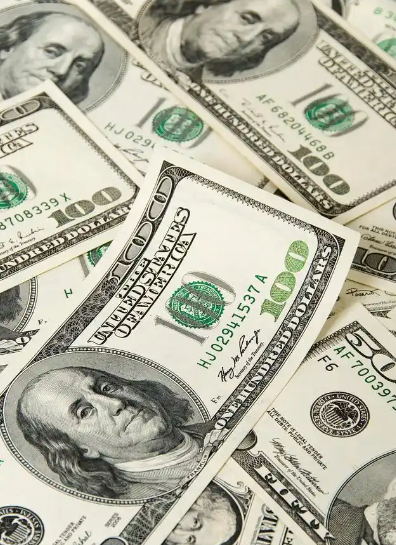The Science Behind High-Yield Savings Account Rates: Why They Fluctuate and How to Predict Them

The interest rates offered by high-yield savings accounts (HYSAs) are far from random. They’re shaped by a complex interplay of economic forces, central bank policies, and bank competition—factors that can cause rates to rise or fall dramatically over time. For savers, understanding these dynamics is key to maximizing earnings and planning for the future. This article breaks down the science behind HYSA rates, explaining why they fluctuate and how to anticipate changes.
The Role of the Federal Reserve
At the heart of HYSA rate movements is the Federal Reserve (the Fed), the U.S. central bank responsible for managing the nation’s monetary policy. The Fed’s primary tool is the federal funds rate—the interest rate at which banks lend money to each other overnight. This rate ripples through the economy, influencing everything from mortgage rates to savings account yields.
When the Fed raises the federal funds rate (a move to combat inflation), banks typically increase the interest they pay on savings accounts. Why? Higher federal funds rates make it more expensive for banks to borrow money, so they raise savings rates to attract deposits, which they can then lend out at higher rates. Conversely, when the Fed cuts rates (to stimulate economic growth), banks lower savings rates to reduce their costs.
In 2025, for example, if the Fed signals plans to raise rates to cool a growing economy, HYSAs are likely to follow suit, with APYs inching toward 6%. If a recession prompts rate cuts, HYSA yields could drop to 3–4% within months.
Economic Conditions: Inflation and Market Demand
Inflation—the rate at which prices for goods and services rise—also plays a critical role. Banks set HYSA rates to remain competitive with inflation; otherwise, savers would see their purchasing power erode over time. In periods of high inflation (like 2022, when U.S. inflation topped 9%), banks are pressured to offer higher rates to attract deposits. In low-inflation environments, rates tend to stagnate.
Market demand for loans is another factor. When businesses and consumers borrow more (e.g., for mortgages, car loans), banks need more deposits to fund these loans. To attract deposits, they raise savings rates. When lending slows, banks have less incentive to offer high rates, as they don’t need as much cash on hand.
Bank Competition and Business Models
Not all banks offer the same HYSA rates, even in the same economic environment. Online banks, which lack the overhead costs of brick-and-mortar branches (e.g., rent, staffing), can afford to pay higher rates. For example, in 2025, an online bank like Marcus by Goldman Sachs might offer 5.25% APY, while a traditional bank with physical locations (e.g., Bank of America) might offer 3.75% for a comparable account.
Banks also use HYSAs as a marketing tool to attract new customers. A new online bank might offer a promotional rate (e.g., 6.5% APY for the first six months) to gain market share, then lower it to a more sustainable level. Savers should be wary of such “teaser rates” unless they’re prepared to switch accounts later.
Predicting Rate Movements: What to Watch For
While no one can predict rates with perfect accuracy, monitoring these indicators can help you anticipate changes:
1. Fed Meetings: The Fed holds eight annual meetings to set monetary policy. Statements and press conferences after these meetings often hint at future rate hikes or cuts. For example, a 2025 Fed statement warning of “persistent inflationary pressures” could signal upcoming rate increases.
2. Inflation Reports: The Consumer Price Index (CPI) and Personal Consumption Expenditures (PCE) reports, released monthly, show how quickly prices are rising. A higher-than-expected CPI reading may push the Fed to raise rates, boosting HYSA yields.
3. Bank Earnings Calls: Large banks often discuss their deposit strategies during quarterly earnings calls. If executives mention plans to “increase deposit rates to support lending growth,” it’s a sign HYSAs may soon offer higher yields.
Strategies for Adapting to Rate Changes
4. Lock in Rates When Possible: If you anticipate rates will fall, consider moving some funds to a CD, which offers a fixed rate for a set term (e.g., 12 months). This protects you from future drops.
5. Stay Flexible: If rates rise, be prepared to switch to a higher-paying HYSA. Most online banks make transfers easy, with no fees for moving funds.
6. Ladder Your Savings: Split your savings between an HYSA (for liquidity) and CDs of varying terms (e.g., 6-month, 1-year, 2-year). This balances accessibility with the ability to lock in higher rates.
The Bottom Line
HYSA rates are a reflection of the broader economy, shaped by the Fed, inflation, and bank competition. By understanding these forces, savers can make informed decisions—whether to open an account, switch banks, or adjust their savings strategy. In 2025, as economic uncertainty persists, staying attuned to rate trends will be key to maximizing the growth of your hard-earned money.